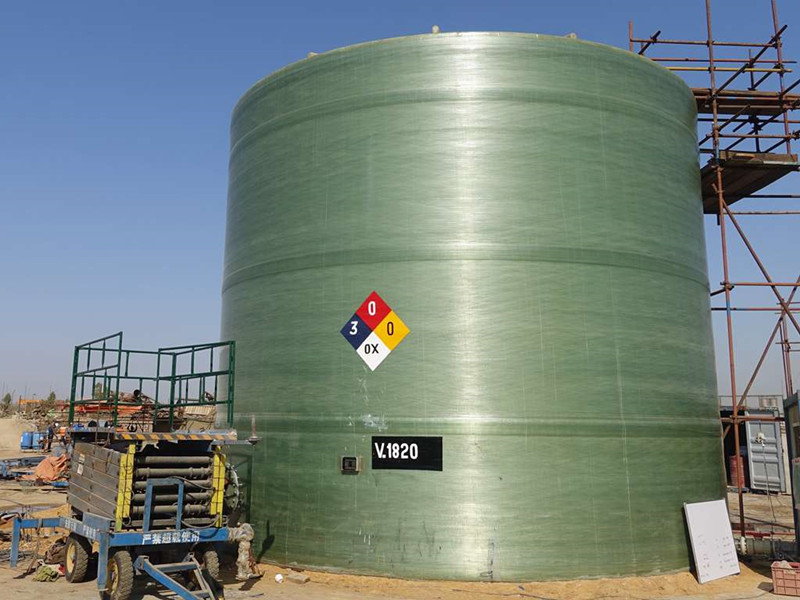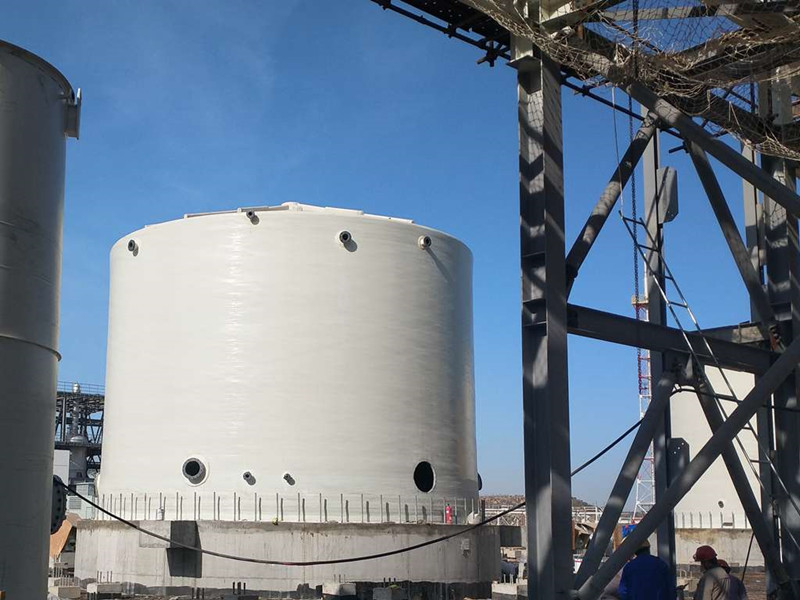Large Size Field Tanks: High-Capacity, Durable Storage
Large Size Field Tanks: field‑wound FRP where trucking just can’t go
In the last five years, the tank conversation has shifted from “how big can we ship?” to “how fast can we wind on site?” That’s exactly the niche where Large Size Field Tanks in fiberglass (FRP) shine. When diameters push past DN4500 and up to DN25000, transport becomes the enemy—so the factory effectively goes to the foundation. I’ve watched crews mobilize filament-winding towers, assemble jigs, and build full-size shells right beside a brine pond. Honestly, it’s impressive and a little hypnotic.

Why FRP field tanks are trending
Project owners want corrosion resistance without steel’s paint-and-recoat cycle, modular construction to dodge logistics, and faster commissioning. Large Size Field Tanks hit that trifecta—especially for desalination brine, mining leachate, fire water, chemical process liquor, fertilizers, and even potable water (when built to the right standard). Many customers say maintenance budgets finally breathe.
Product snapshot
| Name | Large Size Field Tanks (FRP, field-wound) |
| Size range | DN4500 – DN25000 (height typically 6–22 m, project-specific) |
| Materials | E‑glass, C‑glass veil; resins: isophthalic polyester, vinyl ester, epoxy vinyl ester; UV additives |
| Design & codes | ASME RTP‑1, ASTM D3299/D4097; AWWA D120; optional NSF/ANSI 61 for potable |
| Typical liner | 2.5–5.0 mm corrosion barrier + structural laminate ≈ 20–60 mm (real-world use may vary) |
| Service life | ≈25–40+ years depending on medium, temp, UV exposure |
| Origin | No. 1289, Yingbin South Street, Jizhou District, Hengshui, Hebei, China |
How it’s built (quick process flow)
- Prep: Foundation survey, wind/seismic checks, and QC plan. Materials staged under tented conditions.
- Liner: C‑glass veil + corrosion barrier laid up; resin-cured to ASTM D2563 visual class.
- Filament winding: Computer‑controlled helical/hoop winding to ASTM D3299 with programmed angles for axial/hoop loads.
- Shell & roof: Segmental build; flange rings, stiffeners, and lamination of joints in situ.
- Nozzles/internals: Manways, baffles, ladders, level ports; bonding per ASME RTP‑1 workmanship sections.
- Cure & post-cure: Controlled exotherm; Barcol hardness per ASTM D2583 (target ≥40, resin dependent).
- Tests: Hydrostatic fill (24 h, no weeps), dimensional checks, spark/holiday test on conductive liners (when specified), coupon tests (ASTM D638 tensile).
- Documentation: MDR with traceability, resin lot certs, cure logs, inspection photos.

Where they’re used (and why)
- Desalination: brine, permeate, CIP—vinyl ester liners hold up well.
- Mining: acidic leachate and pregnant solutions; FRP avoids underfilm corrosion.
- Fire protection: large fire water reserves with low maintenance.
- Ag/food: fertilizers, molasses; for potable, specify NSF/ANSI 61.
- Wastewater/biogas: digestate and odor covers. Surprisingly quiet installs.
Vendor snapshot (real-world buyers keep asking this)
| Vendor | Core Material | Typical Diameter Capability | CapEx/OpEx Outcome (≈) | Notes |
|---|---|---|---|---|
| Jrain FRP (Large Size Field Tanks) | FRP (vinyl ester options) | Up to DN25000 | Lower OpEx vs steel; mid CapEx | Field winding; strong corrosion barrier; global deployment |
| Steel Field-Erected (generic) | Carbon steel + coating | DN up to 80 m+ | Higher OpEx (recoating cycles) | Excellent for very large fire water; coating risk in acids |
| HDPE Modular (generic) | Thermoplastic panels | DN ≈ up to 12–15 m | Low CapEx; mixed OpEx | Good for neutral media; temp limits apply |
Customization & proof points
- Options: seismic/wind design, external insulation, heat tracing, anti-slip tops, internal baffles, sloped floors, double-wall bunding.
- Sample test data: Barcol 41–48 (ASTM D2583), gel coat 0.4–0.6 mm, hydrostatic hold 24 h with 0 leaks, laminate tensile strength verified per ASTM D638.
- Certifications: ISO 9001 factory QA, ASME RTP‑1 shop practices, AWWA D120 for water service; NSF/ANSI 61 on request.

Real projects (quick takes)
- Mining leachate, Latin America: three Large Size Field Tanks, DN16000 x 14 m, vinyl ester liner; reported zero coating touch-ups after year 2.
- Desalination, MENA: two DN20000 permeate tanks; commissioning in 10 weeks including civil hold points—faster than I expected.
- Fire water reserve, APAC: DN12000 with foam chambers; owner liked the low algae growth under UV-stabilized topcoats.
If you’re evaluating lifetime cost, the math usually tilts toward Large Size Field Tanks once corrosion chemistry gets spicy. Field-wound FRP isn’t a fad—it’s where logistics and durability meet.
Authoritative references
- ASME RTP‑1: Reinforced Thermoset Plastic Corrosion Resistant Equipment [ASME Store]
- ASTM D3299: Filament-Wound Glass-Fiber-Reinforced Thermoset Resin Tanks [ASTM International]
- AWWA D120: Thermosetting Fiberglass-Reinforced Plastic Tanks [American Water Works Association]
- ASTM D2583: Indentation Hardness of Rigid Plastics by Barcol Impressor [ASTM International]
- NSF/ANSI/CAN 61: Drinking Water System Components—Health Effects [NSF]
Latest news
-
Rectangular Tank Made of Fiberglass Material – Durable, Cost-Effective Liquid Storage SolutionsNewsNov.24,2025
-
Hollow Drill Rods for Efficient Drilling Operations in the Field | Durable, Lightweight & CustomNewsNov.23,2025
-
Powerful yt27 Rock Drill for Tough Mining Surfaces | Durable & PortableNewsNov.23,2025
-
Why the Reversible Drill Bit Is a Versatile Tool for All Your Drilling NeedsNewsNov.22,2025
-
Fiberglass Food Grade Equipment: Key Features, Benefits & Global ImpactNewsNov.22,2025
-
How a Drilling Rod Spirals Down Into the Earth: Tech, Trends & Global ImpactNewsNov.21,2025











